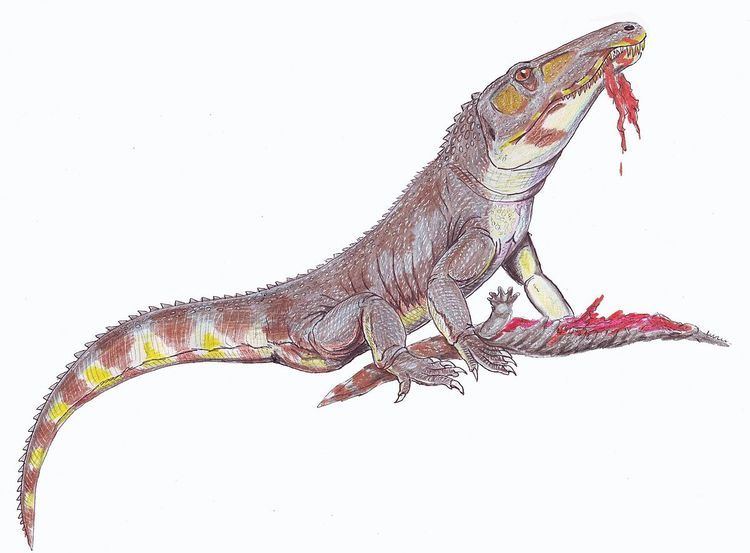 | ||
In the geologic timescale, the Olenekian is an age in the Early Triassic epoch or a stage in the Lower Triassic series. It spans the time between 251.2 Ma and 247.2 Ma (million years ago). The Olenekian follows the Induan and is followed by the Anisian.
Contents
The Olenekian saw the deposition of a large part of the Buntsandstein in Europe. Archosaurs - a group encompassing crocodiles, pterosaurs, dinosaurs, and ultimately birds - are diapsid reptiles that first evolved from Archosauriform ancestors during the Olenekian.
The Olenekian is roughly coeval with the regional Yongningzhenian stage used in China.
Stratigraphic definitions
The Olenekian stage was introduced into scientific literature by Russian stratigraphers in 1956. The stage is named after Olenëk in Siberia. Before the subdivision in Olenekian and Induan became established, both stages formed the Scythian stage, which has since disappeared from the official timescale.
The base of the Olenekian is at the lowest occurrence of the ammonites Hedenstroemi or Meekoceras gracilitatis, and of the conodont Neospathodus waageni. It is defined as ending near the lowest occurrences of genera Japonites, Paradanubites, and Paracrochordiceras; and of the conodont Chiosella timorensis. A GSSP (global reference profile for the base) has in 2009 not yet been established.
The Olenekian is sometimes divided into the Smithian and the Spathian subages or substages.
